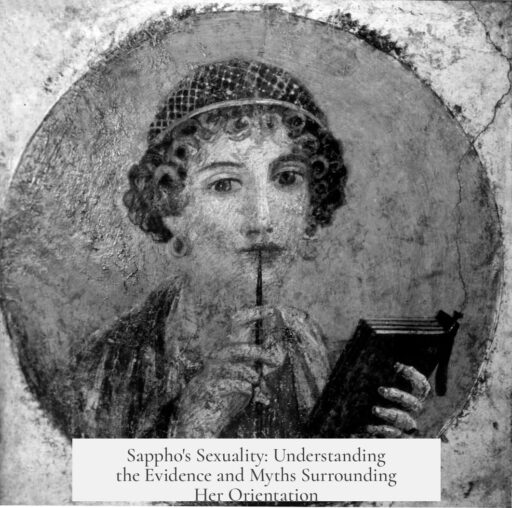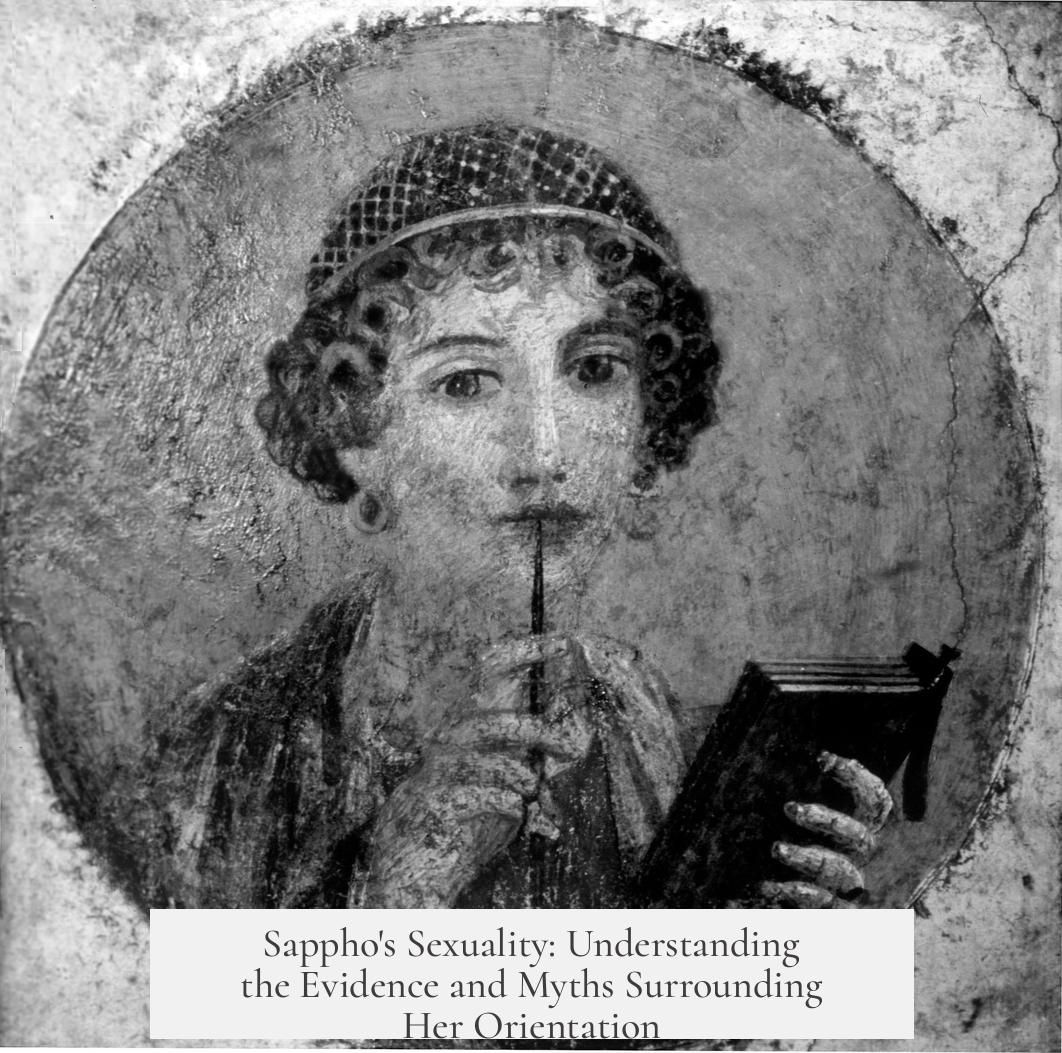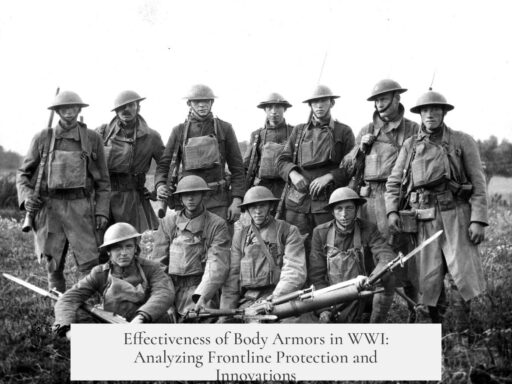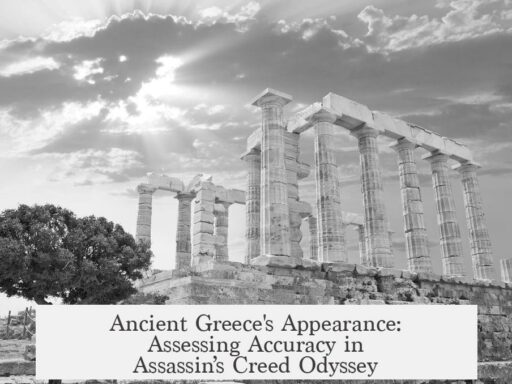There is no definitive proof that Sappho was homosexual in the modern sense of exclusive sexual orientation. The evidence about her sexuality is limited, ambiguous, and shaped by the cultural context of Archaic Greece, where contemporary categories like “homosexual” or “heterosexual” did not exist. Her poetry, the primary source of information about her personal feelings and relationships, reflects complex themes of desire and affection toward women but does not conclusively establish her sexual identity.
Most of what is known about Sappho’s personal life and sexuality comes from fragments of her lyric poetry and later testimonies written centuries after her death. These sources suggest strong emotional and possibly erotic attractions to women, but there is no surviving direct historical evidence confirming exclusive homosexual relationships.
Modern concepts of sexual orientation are culturally and historically recent. In Archaic Greece, people did not identify themselves as “gay,” “straight,” or any similar category. Sexual identity as understood today was largely irrelevant, and social norms around relationships were very different. Sappho, if asked to describe her sexual orientation in today’s terms, would find the question unfamiliar and difficult to answer.
It is important to avoid imposing modern labels onto ancient figures like Sappho. Sexual fluidity or a broader spectrum of sexual behaviors were likely common, though poorly documented. Terms such as bisexuality or pansexuality complicate any clear categorization. Thus, speculating about Sappho’s exact sexual orientation based on surviving evidence is unproductive and uncertain.
Notably, the word “lesbian” originally referred only to someone from the island of Lesbos, where Sappho was born and lived. The sexual meaning connected to female homosexuality developed only millennia later. Therefore, while Sappho was “a Lesbian” by geography, claiming she was “a lesbian” by sexual orientation is anachronistic.
The poetry itself reveals Sappho’s intense feelings of love, desire, jealousy, and heartache directed toward women. She uses terms like eraman, which have erotic implications, rather than just platonic terms like philein. These linguistic choices highlight the passionate nature of her sentiments.
Despite this, her poems are often fragmented and open to interpretation. Whether her depictions of love with women were romantic, sexual, performative for an audience, or expressions of close friendship is difficult to determine. The social realities of women’s lives in Archaic Greece were different from today, limiting our understanding. Women mostly had key relationships with other women due to social separations from men.
The earliest classical testimonies describing Sappho’s sexuality come from the Hellenistic and Roman periods, almost 500 years after her life. Writers of that era debated whether she was physically or romantically involved with the women she wrote about, but historical consensus remains inconclusive. These debates reflect enduring curiosity about her relationships, yet no firm conclusions.
| Aspect | Details |
|---|---|
| Primary Evidence | Fragmented, personal poems with erotic themes about women |
| Cultural Context | No concept of sexual orientation as modern identity |
| Terminology | “Lesbian” = from Lesbos, not sexual label in antiquity |
| Historical Testimony | Hellenistic/Roman sources speculated, no contemporary proof |
| Interpretation Challenges | Poor historical record, fragmented texts, ambiguous meanings |
Given all factors, historians stress that Sappho’s sexuality resists neat classification. Her poetry undeniably addresses love and desire between women but does not provide incontrovertible evidence of exclusive homosexuality.
Key takeaways:
- Sappho wrote vivid, emotional poetry about love involving women, often with erotic undertones.
- Sappho lived when no notion of sexual orientation as identity existed.
- Later testimonies are centuries removed and not fully reliable for confirming personal life details.
- Modern sexual labels cannot be accurately applied to Sappho’s life or work.
- The term “lesbian” originally referred only to geographic origin, not sexual behavior.
- Sexual identity in ancient Greece was complex, fluid, and historically hard to trace.
Do We Have Proof Sappho Was Homosexual? Unpacking the Myths and Realities
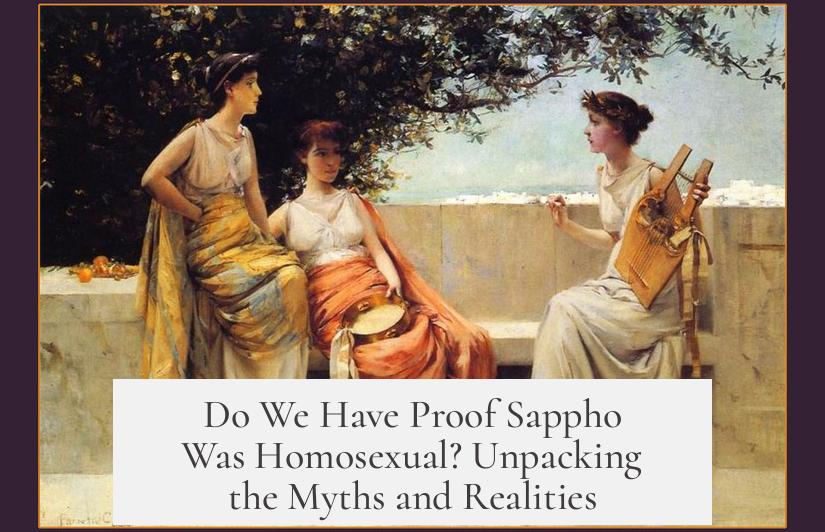
If you’ve ever wondered if history gives us definitive proof that the ancient Greek poet Sappho was homosexual, you’re in for a nuanced exploration. The straightforward answer? There’s no ironclad proof that Sappho was exclusively attracted to women, mainly because the concept of sexual orientation as we understand it today didn’t exist in her time.
Let’s dive deeper into why the question is trickier than it appears, what her poetry tells us—or doesn’t—and why applying modern labels to an ancient figure might do more harm than good.
Peering into Archaic Greece’s Black Hole of Evidence
Attempting to piece together Sappho’s sexual identity is like trying to solve a jigsaw puzzle with half the pieces ripped away and a few missing altogether. The period she lived in, Archaic Greece (circa 7th century BCE), offers very few surviving texts beyond fragments of her poetry. Most historical records that might have given additional context are long lost or were never written to begin with.
Her poems are some of the best textual evidence we have. But! These fragments are often ambiguous and incomplete. So, if you’re chasing a historical smoking gun that confirms she was exclusively attracted to women, be prepared to be disappointed.
The Conceptual Roadblock: No “Homosexual” or “Heterosexual” in Sappho’s Vocabulary
Here’s a bombshell: labels like “gay,” “straight,” or “bisexual” did not exist in Sappho’s world. The ancient Greeks didn’t slice human attraction into neat categories the way we do now. If you asked Sappho, “Are you a lesbian?” she wouldn’t understand the question.
This absence of modern sexual identity frameworks means that calling Sappho “homosexual” or any fixed orientation is anachronistic—like expecting a caveman to explain quantum physics. Ancient relationships and desires don’t slot easily into 21st-century labels.
Exploring Sexual Fluidity, or Why Labels Might Not Fit
Sure, “homosexual” or “heterosexual” fit snugly for many modern people, but if we’re honest, human attraction is often more complex.
Just as today some prefer “bisexual” or “pansexual” because human feelings don’t always stick to one side, Sappho’s life likely reflected some degree of fluidity. Unfortunately, we don’t have enough detailed records of her romantic entanglements to know for sure. She might have experienced desires and relationships that blur modern categories.
Trying to pin down her preferences risks oversimplifying a complex person from a very different culture.
Sappho: Lesbian by Geography, Not by Orientation
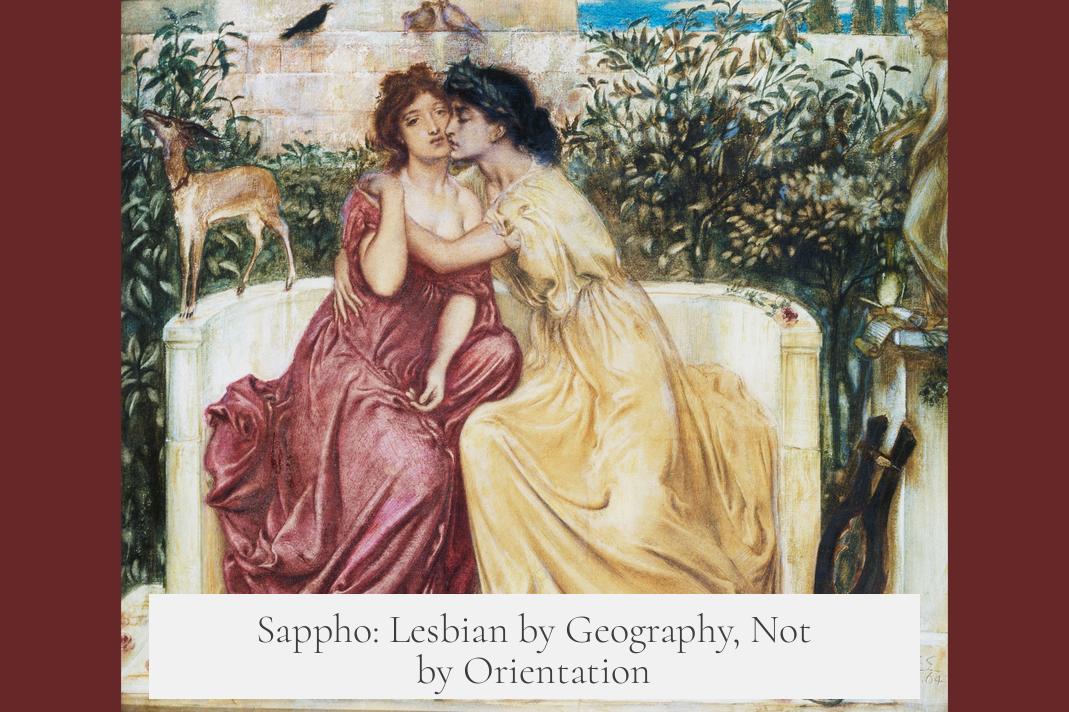
Fun fact: the term “lesbian” originally referred simply to people from the island of Lesbos, where Sappho was born. The word didn’t gain its sexual orientation connotation until much later—centuries after her time.
So, while she was indisputably a “Lesbian” geographically, the label as a reference to sexual preference was not something she recognized or lived by. This highlights how tricky historical terminology can be when viewed through today’s lens.
What Sappho’s Poetry Reveals—and Withholds—About Her Desires
Sappho’s poetry provides tantalizing hints, but also frustrating ambiguity. Many of her surviving fragments express profound emotions—desire, jealousy, heartbreak—with respect to women. Yet, interpreting these as evidence of exclusive homosexuality is complicated.
She wrote wedding songs where female friends praised brides, often with an undercurrent of affection. Some of these choruses might have been erotically charged, but were largely a form of social ritual and celebration. These weren’t personal love letters but public declarations.
Sappho’s poems often center on women’s lives and experiences, a notable deviation from many male poets of her era who sung of heroic exploits. She even composed songs about gods, family, and the pangs of aging. The throughline is a focus on relationships, community, and personal feeling.
When she uses words tinged with erotic meaning, like eraman (to love passionately), instead of more neutral terms, eyes widen. But remember, these words don’t neatly define sexual labels. The fragments reveal passion but don’t spell out the nature of those relationships in ways modern readers expect.
Social and Historical Context: Women’s Lives in Ancient Greece
Women in ancient Greek city-states often socialized mostly with other women, since public life was dominated by men. Bonds among women could be intense, close-knit, and complex without necessarily equating to what we call “romantic relationships” today.
Her social circles consisted primarily of upper-class women who were also her friends and sometimes rivals. The mentions of figures like Atthis and Megara suggest dynamic relationships, with competition and jealousy as familiar emotions. Whether these involved romantic love or political/social maneuvering is unclear.
How Later Generations Viewed Sappho’s Sexuality
Interestingly, debates about Sappho’s sexuality have persisted since antiquity. Hellenistic and Roman authors, writing centuries after her death, speculated based on her poems about whether she had romantic or physical relationships with women. These authors shaped much of the received narrative about her.
But given their temporal distance and cultural differences, and the fragmentary nature of the evidence, their accounts should be taken with caution. This doubt has lingered into modern scholarship.
Was Sappho a Teacher, Priestess, or Performer? And Why That Matters
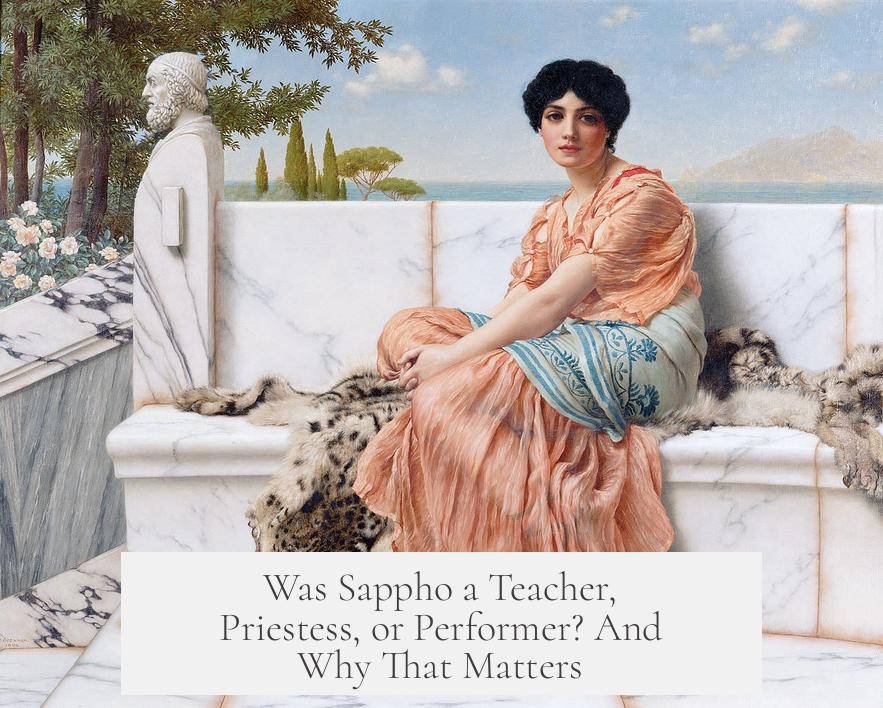
Another angle: some scholars suggest Sappho might have functioned as a teacher of young women’s poetry and song or even as a priestess. This emphasizes her role in female social education and communal performances.
This pedagogical role brings to mind comparisons with male pederasty practices, though such comparisons are tenuous. They reflect modern attempts to understand her social impact rather than prove her sexual preferences.
Why Speculating About Sappho’s Sexuality Can Be a Losing Game
At the end of the day, asking if Sappho was homosexual is a question loaded with modern assumptions and limited by a scarce historical record. We simply do not know her attractions, or the nature of her relationships.
Her poetry bursts with emotional honesty and complexity, often revolving around women’s lives and affections, yes. But this doesn’t translate into fixed sexual identity as we understand it now.
Is that frustrating? Maybe. But it’s also a fascinating reminder of the limits of applying current social concepts to the past.
So, What Can We Take Away?
- Historical context is king. Our labels and categories didn’t exist in Sappho’s time, making direct identification impossible.
- Poetry offers emotional insight, not a biography. Sappho’s lyricism reveals feelings of desire and jealousy, but the precise nature of her relationships remains elusive.
- Understanding her role in society matters. She was a prominent poet among women, possibly a teacher and leader in female social spaces.
- Modern interpretations must tread carefully to avoid projecting contemporary sexuality concepts onto an ancient world that saw things very differently.
Next time you read Sappho, feel the emotion first, resist the urge to label, and remember: sometimes the mystery itself adds to the magic.
Want to Dive Into Sappho’s World? Some Tips and Resources
- Read translations of her surviving fragments and consider context rather than labeling.
- Explore research on Archaic Greek society to understand social dynamics among women.
- Look into modern scholarship discussing the challenges of interpreting ancient sexuality.
- Keep an open mind to the fluidity and complexity of human feelings across time.
“We do not know much about women’s lives in Archaic Greece, let alone how homosexuality was perceived or to what extent homoerotic bonds may have been tolerated.” — A Key Takeaway from Modern Historians
In closing, while Sappho’s name is synonymous today with female homoerotic love, historical proof of her exclusive homosexuality is elusive and possibly unattainable. Instead, what we do have is poetry that celebrates love and longing, particularly among women, offering timeless connections beyond categories.
Do we have direct proof that Sappho was exclusively attracted to women?
No direct proof exists. Archaic Greece leaves few records, and Sappho’s poems are the main source. These poems suggest relationships with women, but exclusive attraction cannot be confirmed.
Did Sappho identify as homosexual or lesbian?
Such identities did not exist in her time. The concepts of “homosexual” or “lesbian” are modern and were unknown to Sappho. She wouldn’t have identified with these labels.
Are Sappho’s poems clearly homoerotic?
Her poetry reflects themes of love and desire, often directed at women. The poems use terms with erotic tones, but interpreting them as strictly sexual or platonic is difficult due to their fragmentary nature.
Can we say Sappho was bisexual or sexually fluid?
Ancient Greek sexual categories differ from today’s. Labels like bisexual or sexually fluid don’t fit well with what we know. It is hard to apply modern terms to her life and poetry.
Why is there debate about Sappho’s sexuality?
Contemporary evidence is scarce. Later authors debated her relationships due to her poems. Social norms kept women’s interactions mostly private, complicating understanding of her relationships.
